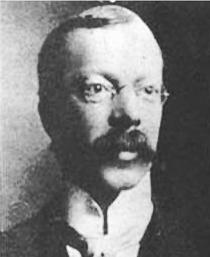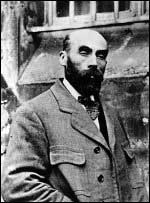Monday, December 3: The Scribbler
CORPUS DELICTI
by James Lincoln Warren
A few years ago I attended Malice Domestic, the fan convention dedicated to traditional detective fiction held every year in Arlington, VA. Linda Landrigan had arranged to have me seated at Alfred Hitchcock‘s table at the awards banquet. The other guests were wonderful: I had the pleasure of being seated between the erudite Douglas G. Greene, Professor of History at Old Dominion University in Norfolk, Virginia, and esteemed Ellery Queen Award-winning publisher of Crippen & Landru (the only book publisher dedicated to the mystery short story), and the charming and witty S.J. Rozan, winner of back-to-back Edgars in 2002 and 2003, first for her short story “Double-Crossing Delancy”, then for the novel Winter and Night. Altogether, S.J. has five, count ’em, five Edgar nominations.
Well, I was in hog heaven. I would follow S.J. anywhere, for one thing, but to be completely honest, Doug was one of the most pleasant dinner companions I have ever had the pleasure to converse with. He introduced himself by apologizing that he could not publish a collection of the Treviscoe stories. I wasn’t so much upset about that as I was thrilled that he actually knew the Treviscoe stories. And then we were off on a wonderful discussion of mystery short fiction. At one point, S.J. shook her head and muttered, “Short story people”, as if we were some kind of silly club — well, Doug and I were among the few men there, and as I remember, the only ones in black tie, so I guess we were dressed a little funny — but I immediately turned on her and viciously quipped, “You should talk. You’re the one with the Edgar.”
That cut her to the bone, I can tell you.
Did I just write “cut to the bone”? As in dismembering bodies?
I think I did.
And speaking of dismembered bodies, I might mention that Doug’s publishing house is named for two of the most sensational criminal defendants of the early 20th century.
 The first is Dr. Hawley Harvey Crippen, an American who was accused and convicted of poisoning his faithless wife and then dismembering her body in his London basement, so he could enjoy the love of his new mistress, Ethel le Neve. Crippen was hanged, but Ethel was acquitted. Today, there is evidence that Crippen was innocent, but the sensational nature of the alleged crime is such that his name will forever be associated with the horrific.
The first is Dr. Hawley Harvey Crippen, an American who was accused and convicted of poisoning his faithless wife and then dismembering her body in his London basement, so he could enjoy the love of his new mistress, Ethel le Neve. Crippen was hanged, but Ethel was acquitted. Today, there is evidence that Crippen was innocent, but the sensational nature of the alleged crime is such that his name will forever be associated with the horrific.
 The second is Henri Désiré Landru, a multiply-convicted small-time French con-man. In the 1910s, Landru discovered his true calling in charming rich late-middle-aged widows into falling in love with him. (As you can see, he was quite the ladies’ man, a regular Adonis. Not.) Eleven of these women fell off the face of the Earth, where their money somehow miraculously remained without them, albeit firmly in Henri’s hands. Landru expected to be acquitted because there were no bodies ever found, but he wound up keeping a rendezvous with another widow, Madame la Guillotine, in 1922. The Landru case was unusual in that the balding Barbe-bleu was convicted of murder without there being a body (or in his case, eleven bodies) available to prove that murder was done. Of course, Landru’s defense might have been a little hampered by the Napoleonic Code, which does not include a de facto presumption of innocence
The second is Henri Désiré Landru, a multiply-convicted small-time French con-man. In the 1910s, Landru discovered his true calling in charming rich late-middle-aged widows into falling in love with him. (As you can see, he was quite the ladies’ man, a regular Adonis. Not.) Eleven of these women fell off the face of the Earth, where their money somehow miraculously remained without them, albeit firmly in Henri’s hands. Landru expected to be acquitted because there were no bodies ever found, but he wound up keeping a rendezvous with another widow, Madame la Guillotine, in 1922. The Landru case was unusual in that the balding Barbe-bleu was convicted of murder without there being a body (or in his case, eleven bodies) available to prove that murder was done. Of course, Landru’s defense might have been a little hampered by the Napoleonic Code, which does not include a de facto presumption of innocence
 In the U.S., where the Blackstone ratio1 is an accepted principle, the first such conviction was here in sunny Southern California in 1957, People v. Scott. Leonard Ewing Scott was convicted of murdering his wife Evelyn, and appealed his conviction on the grounds that there was no corpus delicti, the body having never been found. The conviction was sustained. You can read the decision here. I commend it to the Gentle Reader; very interesting stuff indeed.
In the U.S., where the Blackstone ratio1 is an accepted principle, the first such conviction was here in sunny Southern California in 1957, People v. Scott. Leonard Ewing Scott was convicted of murdering his wife Evelyn, and appealed his conviction on the grounds that there was no corpus delicti, the body having never been found. The conviction was sustained. You can read the decision here. I commend it to the Gentle Reader; very interesting stuff indeed.
The principal contention is that there was insufficient evidence to establish the corpus delicti. The evidence was wholly circumstantial. It is not claimed that in a trial for murder the death of a missing person and the use of criminal means to accomplish death cannot be proved by circumstantial evidence, provided it is sufficient to preclude every reasonable theory of innocence of the accused. The principle is well established. If it were not so we would have to hold the evidence insufficient to support the verdict. —People v. Scott
The term “corpus delicti” does not actually refer to the corpse of the murdered person, but rather to the body of the crime; that is, the elements and evidence that indicate the crime was committed. In that sense, a corpse can certainly be part of corpus delicti, but only as evidence that a crime has been committed. Here are two quotes from the OED that explain it more clearly:
1832 AUSTIN Jurispr. (1879) I. xxiv.: 479 Corpus delicti (a phrase introduced by certain modern civilians) is a collective name for the sum or aggregate of the various ingredients which make a given fact a breach of a given law.
1863 N.Y. State Court of Appeals, Rep. IV. 179: The corpus delicti, in murder, has two components, death as the result and the criminal agency of another as the means.
Crippen may have been innocent of murdering his wife — although this doesn’t explain away the human remains found in his basement — and Landru and Scott might have been cunning enough to keep their victims from being found, but the stories, the true corpora delicti, were there.
And storytelling is what it’s all about.
- “Better that ten guilty persons escape than that one innocent suffer.” [↩]




















I am a frequent customer of C & L, so thanks for this! I enjoy their books very much. (Hey, doesn’t Landru look a little like Rasputin?) Mellville Davisson Post touched on the Corpus Delecti thing in a Randolph Mason story and I think it helped get the earlier version of the law changed!
Thanks again!
I am a standing order customer with C & L and I have always found both Doug and Sandi to be wonderful. I remember a wonderful conversation I had with Doug over the phone about Carr first editions and Ellery Queen radio scripts. Doug was also helpful in locating some books I was looking for that weren’t C & L. Thanks for promoting such a gracious gentleman and a wonderful publisher!
Doug Greene is also, of course, the author of John Dickson Carr: The Man Who Explained Miracles, which was nominated for an Edgar in 1996.
Hey, I think I was at that table. Then again, it might have been the 2004 Edgars. (I found a photo of Table 29, at which JLW is seating sans tuxedo between myself and S.J. Rozan, but I don’t think Doug was there).
I agree with everything all of you have said about Doug and Sandi. They don’t make ’em any nicer. (So it’s especially ironic that Doug named his publishing house for two cold-blooded killers).
One day I’ll use my Bandersnatched column to tell the story of how I met Doug. It’s a real story of serendipity.
[…] house, literally in his kitchen. Named for a pair of early 20th Century murderers (for details, see JLW’s excellent column) from December 3, Crippen & Landru ) has now published more than eighty short story […]